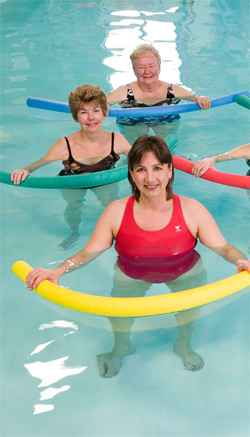
For years aqua-therapists have seen how rehabbing in the water is one of the best ways to achieve full function, regardless of the injury. Now, advanced aquatic therapy pools, once the exclusive domain of pro and college sports teams, are coming to senior centers.
The weight of the world can feel heavy on Kay Schweinfurth who has lived with Parkinsons for 23 years. But she is absolutely buoyant in a therapy pool and on an underwater treadmill.
Keith McCrate, Community Director of Rehabilitation at Presbyterian Village North in Dallas, Texas told Ivanhoe, Kay is able to actually do a pretty aggressive workout of muscle strengthening, balance training, and endurance training in this nice environment.
Kay told Ivanhoe, I dont have any kind of aches and pains after I get out, no matter how long I exercise.
In the 90-degree pool, 82-year-old Lois McCulloch is recovering from her fractured pelvis in about half the time it would take on land.
I cant explain it, but I do know Im pain free when Im in the water Lois told Ivanhoe.
Research shows that aquatic-therapy decreases gravitational pull and increases flexibility, increases muscle strength, decreases pain, swelling, and spasticity, and improves balance.
Alberto Lin, M.D., FAAPMR, Physical Medicine and Rehabilitation Specialist at Presbyterian Village North in Dallas, Texas told Ivanhoe, Its not just extending the life span, but youre bringing more quality to it. Im always thinking about how this patient will re-integrate back into the community.
Its a way to improve health and have fun at the same time. More facilities are incorporating therapy pools, and that means more jobs for certified aquatic therapists, so theres a growing field in the job market.
Contributors to this news report include: Cyndy McGrath, Supervising Producer; Don Wall, Field Producer; Cortni Spearman, Assistant Producer; Mikon Haaksman, Videographer and Jamison Koczan, Editor.